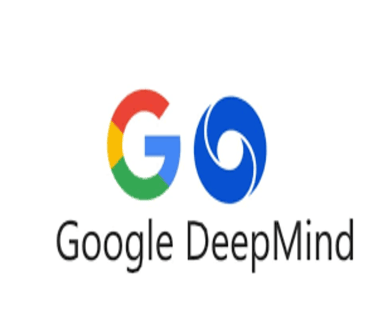Google DeepMind has introduced Genie, a cutting-edge model capable of generating interactive video games from simple text or image prompts, without requiring prior training on game mechanics. This innovative breakthrough allows users to create playable environments based solely on synthetic images, photographs, and sketches, offering a completely new way to design interactive experiences.
What Is Genie?
- Generative Interactive Environments (Genie) is a foundation world model that is trained on videos sourced from the Internet.
- The model can “generate an endless variety of playable (action-controllable) worlds from synthetic images, photographs, and even sketches.”
- Genie is the first generative interactive environment that has been trained in an unsupervised manner from unlabelled internet videos.
- When it comes to size, Genie stands at 11B parameters and consists of a spatiotemporal video tokenizer, an autoregressive dynamics model, and a simple and scalable latent action model.
- These technical specifications let Genie act in generated environments on a frame-by-frame basis even in the absence of training, labels, or any other domain-specific requirements.
Key Features of Google DeepMind’s Genie
- Genie can be prompted to generate a diverse set of interactive and controllable environments although it is trained on video-only data.
- It makes playable environments from a single image prompt.
- It can be prompted with images it has never seen. This includes real world photographs, sketches, allowing people to interact with their imagined virtual worlds.
- It is trained more on videos of 2D platformer games and robotics.
- Genie is trained on a general method, allowing it to function on any type of domain, and it is scalable to even larger Internet datasets.
- The standout aspect of Genie is its ability to learn and reproduce controls for in-game characters exclusively from internet videos.
- This is noteworthy because internet videos do not have labels about the action that is performed in the video, or even which part of the image should be controlled.
- It allows you to create an entire new interactive environment from a single image.
DeepMind’s Role in AI Innovation
- Google DeepMind is a British-American AI research laboratory that is a subsidiary of Google. DeepMind is based in London and has research centres in Canada, France, Germany, and the US
- DeepMind is a division of Alphabet, Inc. responsible for developing general-purpose artificial intelligence (AGI) technology.
- DeepMind uses raw pixel data as input and learns from experience. The AI uses deep learning on a convolutional neural network, with a model-free reinforcement learning technique called Q-learning.
- While the idea of general purpose AI is controversial, Google set out to establish and improve their AI property on a wide variety of grounds. DeepMind technology has been challenged to learn games on its own.
What Is Artificial Intelligence?
- AI is the science of building computers that can solve problems the way humans do.
- It enables high level cognitive processes like thinking, perceiving, learning, problem solving and decision making.
- The AI works on the back of data collection and aggregation, analytics and computer processing.
- AI presents opportunities to complement and supplement human intelligence and enrich the way people live and work.
Evolution Of Artificial Intelligence
- In the year 1956, American computer scientist John McCarthy organised the Dartmouth Conference, at which the term ‘Artificial Intelligence’ was first adopted. From then on, the world discovered the ideas of the ability of machines to look at social problems using knowledge data and competition.
- There used to be several dedicated projects on the same and the government was funding the research.
- Every aspect of science and especially when one starts looking at empowering machines to behave and act like human beings, the questions of ethics arise. About 70’s and late 80’s there was a time when the governments stopped funding research into AI.
- AI experienced a resurgence following concurrent advances in computer power and large amounts of data and theoretical understanding in the 21st century.
- AI techniques now have become an essential part of the technology industry helping to solve many challenging problems in computer-science. From Apple Siri to self-driving cars, AI is progressing rapidly.
Generative Artificial Intelligence (GAI)
- GAI is a rapidly growing branch of AI that focuses on generating new content (such as images, audio, text, etc.) based on patterns and rules learned from data.
- The rise of GAI can be attributed to the development of advanced generative models, such as Generative Adversarial Networks (GANs) and Variational Autoencoders (VAEs).
- These models are trained on large amounts of data and are able to generate new outputs that are similar to the training data.
- While GAI is often associated with ChatGPTand deep fakes, the technology was initially used to automate the repetitive processes used in digital image correction and digital audio correction.
- Arguably, because machine learningand deep learning are inherently focused on generative processes, they can be considered types of GAI, too.
AI and Its Benefits Across Various Industries
- Healthcare: increased access and affordability of quality healthcare.
- Agriculture: enhanced farmers’ income, increased farm productivity and reduction of wastage.
- Education: improved access and quality of education.
- Smart Cities and Infrastructure: efficient and connectivity for the burgeoning urban population.
- Smart Mobility and Transportation: smarter and safer modes of transportation and better traffic and congestion problems.
- Energy: In renewable energy systems, AI can enable storage of energy through intelligent grids enabled by smart meters.
- NITI Aayog estimates that adopting AI means a 15% boost for the gross value added (GVA) for the economy by 2035.
- Increase efficiency and enhance governance across the government.
- Helps in improving the ease of doing business, as well as making the lives of people simpler
India’s Role in Advancing Generative AI
- INDIAai: The National Artificial Intelligence Portal hosts in-depth studies on Generative AI’s potential, risks, and opportunities. It also holds roundtable discussions with key voices in the field.
- National Mission on Interdisciplinary Cyber-Physical Systems: Technology Innovation Hubs (TIH) have been established with a focus on AI and machine learning, promoting next-generation research.
- Global Partnership on Artificial Intelligence (GPAI): India’s membership in GPAI emphasises its commitment to international collaboration on AI development, including generative technologies.
- National Strategy for Artificial Intelligence: The Government has published the National Strategy for Artificial Intelligence with the objective of developing an ecosystem for the research and adoption of Artificial Intelligence.
- Artificial Intelligence Research, Analytics and Knowledge Assimilation Platform: It is a Cloud computing platform, aiming to make India a pioneer amongst emerging economies with regards to AI and transform sectors like education, health, agriculture, urbanisation and mobility.
To Download Monthly Current Affairs PDF Click here
Click here to get a free demo
Discover all about CLAT Exam



